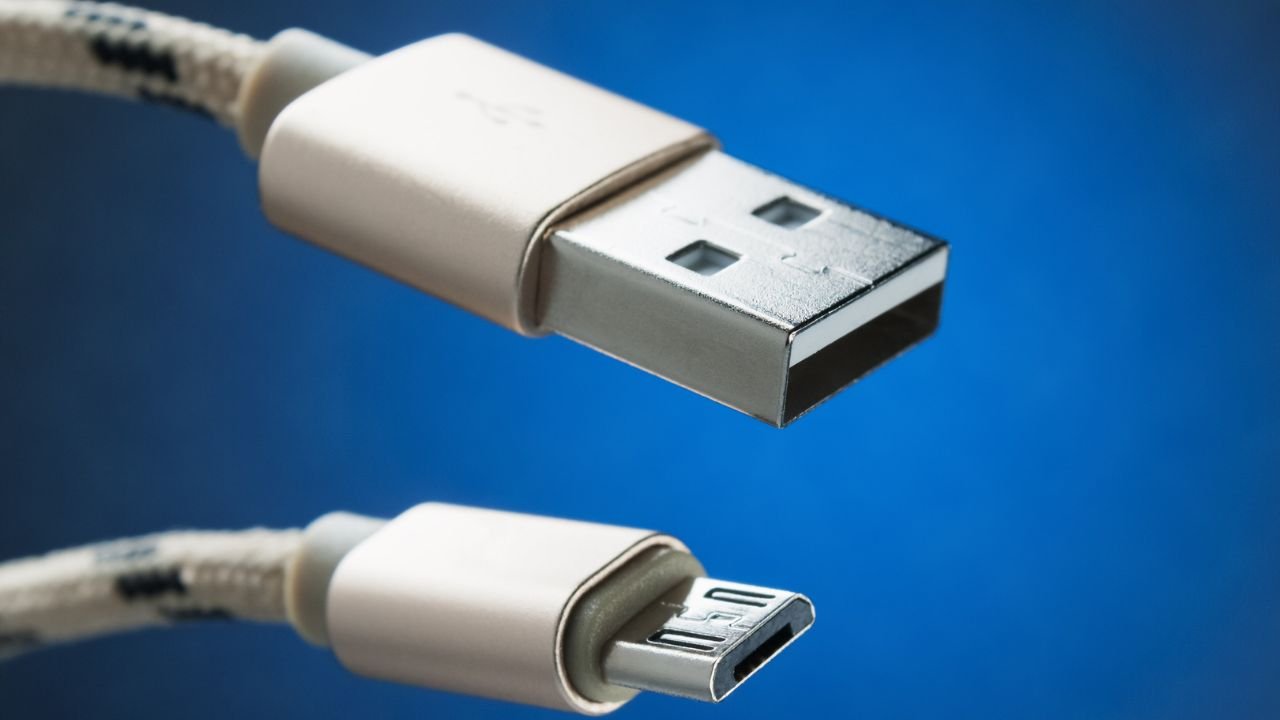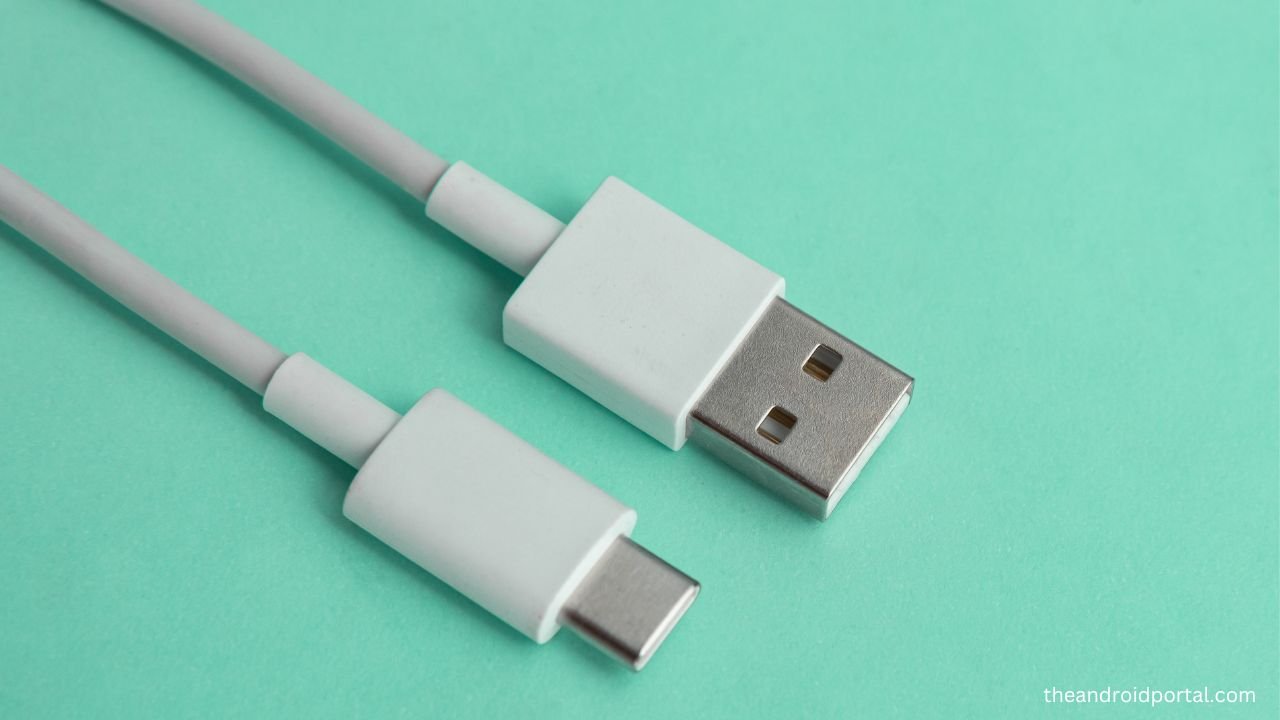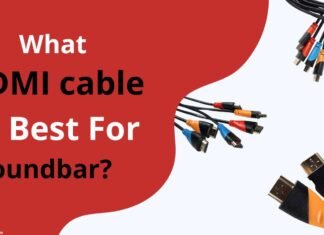What do you prefer when you want to transfer data from a smartphone to a PC? No need to think about this question as the answer is only a Micro USB Cable. It can also be used for charging smartphone devices. But, have you heard about the new USB-type port that comes with the new phones? And, it is a USB-type C port. Now, the question arises How does the USB type C differ from the Micro USB?
So, to have a clarification this, here you will get a comparison between Micro USB vs USB C.
Micro USB vs USB C
Check out the detailed comparison table for Micro USB vs. USB C:
| Feature | Micro USB | USB C |
| Reversibility | One-sided | Reversible |
| Data Transfer Speed | Slower (Varies by version) | Faster (Up to 10 Gbps) |
| Charging Speed | Slower (Varies by version) | Faster (Up to 5A) |
| Connector Type | Smaller, less durable | Compact, robust |
| Compatibility | Common on older devices | Universal |
| Use Cases | Older smartphones, some accessories | Modern devices, laptops, accessories |
| Common Devices | Older Android phones, some budget devices | Latest smartphones, laptops, peripherals |
| Additional Benefits | N/A | Ability to connect multiple devices with adapters |
| Common Versions | Micro USB 2.0, 3.0 | USB 3.0, 3.1 |

What do you prefer when you want to transfer data from your smartphone to a PC? The answer used to be a Micro USB cable, which was also handy for charging your smartphone.
But have you heard about the new USB-type port that comes with modern phones? It’s the USB Type C port. Now, let’s delve into how USB Type C differs from Micro USB.
First and foremost, USB stands for Universal Serial Bus. The primary purpose of developing a USB was to create a connection between secondary parts of a PC, like a keyboard or mouse, and later it became a common choice for charging mobile devices. With time, new and updated versions of USB have emerged.
If you check your smartphone’s port, you’ll likely find a Micro USB B-type port. This type of port is prevalent on most smartphones.
What makes USB Type C unique is its reversibility. In simple terms, you can plug in a USB Type C connector on either side, unlike the Micro USB-B type port, which requires careful alignment. Now, let’s explore the various versions of USB.
- USB 1.1: This version offered data transfer speeds of up to 12 Mbps and a power draw of about 100 mA.
- USB 2.0: USB 2.0 significantly improved data transfer speeds, offering up to 480 Mbps and a power output of about 1.8A at 2.5V.
- USB 3.0: USB 3.0 introduced even faster data transfer speeds of 5 Gbps.
- USB 3.1: The latest version, USB 3.1, boasts mind-blowing features, delivering data at speeds of up to 10 Gbps, with a power draw of about 2A over 5V.
Difference Between Micro USB and USB C
The main difference between these two is as we have discussed earlier, the reversibility. Type C can be plugged into either one or the other side. It generally comes with 24 pins and a USB 3.1 version for high-speed data transfer and charging too.
Type A is what we are using in laptops, PCs, Charging heads, and others. In terms of shape, it has a regular rectangular shape. On the same cable, at the other end, you will find the Micro USB B type.

If we are talking about the Micro USB, only one side will have a way to the plugin. You can not use a Micro USB as a two-sided plugin. Besides this, the major difference is the data transfer speed you can get with the particular USB type.
The USB C type generally comes with either USB version 3.0 or 3.1. It is compatible with most of the devices as it’s more advanced connector type. There are several Type C to USB converters like VGA, Ethernet, and MicroUSB, which means you can convert Type C to a variety of available formats.
This cable can deliver a minimum current of 3A and a maximum of 5A. On the other side, the Micro USB has a lower version of the USB. As it has a lower USB version, it also makes a difference in data transfer speed and charging speed.

USB Type C offers universal compatibility to make a connection with almost all devices. By taking advantage of its compatibility, you can use it for smartphones, game consoles, cameras, laptops, printers, scanners, and more. Also, the major smartphone manufacturers are looking to provide USB C-type ports on their newest devices.
Nowadays there are a lot of types of cables available on the market, some of the advanced types of cables are Magnetic USB charging cables for your device. It is available in both USB type C as well as Micro USB type cables.
Versatile Connectivity: USB C allows for versatile connectivity. You can connect multiple devices to a single USB C port using a hub or adapter, expanding your device’s capabilities. This versatility is especially valuable for modern laptops and tablets, as it simplifies the process of connecting peripherals like monitors, external drives, keyboards, and more. With USB C, you can create a powerful workstation with just one port, streamlining your setup for work or entertainment.
A smartphone having a Type C port:
Samsung Galaxy S8 Plus, Samsung Galaxy S9, Samsung Galaxy S9 Plus, LG G6, OnePlus 6, OnePlus 5T, Nokia 8, Xiaomi MI Max 2, etc. The majority of the latest mobile phones come with a Type C port.
A smartphone having a Micro USB B Type port:
Samsung Galaxy J7, Oppo A57, Oppo F1, Oppo F1 Plus, Xiaomi MI 2, Xiaomi Redmi Note 4, Moto G5 Plus, etc.
So, now after having a ride over this guide, you might be able to solve the confusion. We hope that you will get a proper answer for the Micro USB B type and USB C type. Also, do let us know if still, you are in confused on this topic, Micro USB vs USB C.
Conclusion:
USB C offers clear advantages over Micro USB:
- Reversibility: Plug it in any way—no frustration.
- Faster Data & Charging: Swift transfers and quicker charging.
- Versatile Connectivity: Connect multiple devices with ease.
- Universal Compatibility: Increasingly common in modern devices.
- Durability: A sturdy build ensures a longer lifespan.
USB C is the better choice for most devices, providing speed, convenience, and future-proofing.











